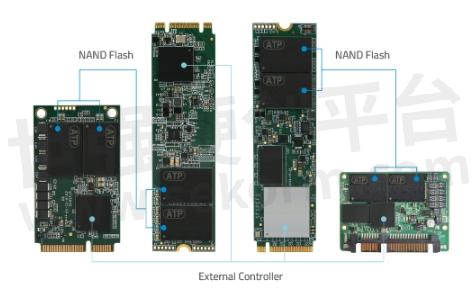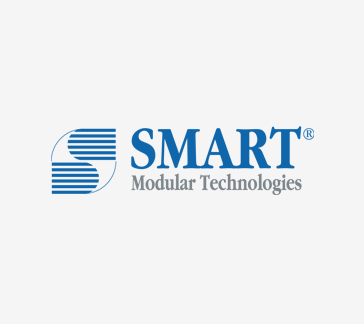Showdown Between Consumer & Industrial SSDs




Key Considerations in Choosing the Right Flash Storage
We live in an era where enormous amounts of data are being generated by the minute, and industries have to seriously consider the most optimal methods of accessing and processing data to meet escalating demands 24/7. While solid state drives and other forms of flash storage are increasingly becoming common choices for their performance and capacity, they are not all the same. Deciding based only on surface criteria may not be the best road to take, especially in industrial applications where data integrity, retention and availability are essential to undertaking critical tasks. How then should you choose the right storage?
As more and more SSDs are being deployed, industries are turning to client- or consumer-grade SSDs to achieve lower total cost of ownership (TCO). Look through the specifications, and at the outset, it may seem that industrial and Consumer SSDs are similar. How suitable are consumer SSDs for industrial use? Going past capacities and form factors, let us look closely and discover a world of difference.
Consumer SSDs are typically used in personal gadgets or for office use, such as on a desktop PC, laptops, handheld and mobile devices, cameras or gaming consoles. Purchases are driven by personal needs or preferences, and technical support is limited.
Industrial SSDs are found in high-performance applications where data integrity and reliability are of paramount importance, such as data centers, server farms, aerospace and avionics, military applications, machine automation, medical solutions, and in-vehicle computing.
Key Considerations
In industrial applications, devices are subjected to harsh environments, operate non-stop in a wide range of severe temperatures, handle enormous workloads, and constantly tackle threats that could compromise secure functionality. It is therefore important for storage devices to be extremely reliable, as device breakdown can lead to data loss and lengthy downtime with catastrophic consequences.
Optimized Performance and Low Latency. consumer flash products are designed for single or few users handling a certain amount of data usually for personal use. Industrial SSDs are engineered to process millions of bytes of data that may be simultaneously accessed by several clients. Latency, also known as response time or wait time, refers to the delay between the time an instruction is sent and the time it is actually executed. Industrial flash products deliver low latency for sustained performance and maximum productivity over long stretches of time.
Wide Temperature Range. While consumer flash products are rated at only 0℃ to 70℃, industrial grade products are built to withstand wide temperature ranges from -40℃ to 85℃, enabling them to operate reliably even in extremely cold or hot operating environments. ATP is among the early storage manufacturers to offer M.2 NVMe SSDs with industrial temperature ratings.
Drive Longevity. Industrial applications require heavy workloads that lead to higher program/erase (P/E) cycles that could impact the endurance of the storage drive. Endurance cycles on TLC-based consumer SSDs range around 1,000 P/E cycles while ATP's products have about 100,000. Higher P/E cycles mean industrial SSDs take longer to wear out. ATP's industrial flash products also feature advanced wear-leveling to extend SSD life, evenly distributing writing on all blocks to avoid writing too often on the same blocks and ensuring that they all wear out evenly. A high Terabytes Written (TBW) rating also reflects drive endurance. It shows how much data can be written to the drive during its entire usage life. The ATP Velocity SII Pro 2.5"SSD for example, has a very high TBW rating of up to 21,333 TB.
Rugged Durability. Mean time between failures (MTBF) refers to the average amount of time that a device functions before failing. For ATP's industrial SSDs, this can go from 2 million hours or 114 years to as high as 5 million hours, which translates to over 570 years. Moreover, ATP flash products are built with extra protection to guard against solid particles as well as liquid and gaseous corrosions that could damage components. System in Package (SiP) technology encapsulates all exposed components to provide protection and shielding, so ATP memory cards are waterproof, dustproof and shock/vibration proof.
Power Loss Protection. While consumer SSDs also offer some resistance to power interruptions, industrial SSDs take it to a whole different level, using techniques and circuitry to mitigate the risks of unexpected power failure. ATP's flash storage products feature advanced power failure protection, which prevents data loss during a power loss event. ATP PowerProtector ensures that the last read/write/erase command is completed and data is stored safely in non-volatile flash memory. ATP SSDs with PowerProtector use tantalum capacitors, which have minimal sensitivity to temperature and humidity, assuring high reliability and endurance even in harsh environments.
Flash Memory Categories
Selecting the right flash type for your application and workload is also very important to ensure that you derive the maximum benefits from your investment. There are two general categories of flash memory.
Raw NAND Flash Memory. This type of NAND flash requires an external hardware controller to handle the flash management functions, such as bad block management, wear leveling, error correction, logical-to-physical address translation, garbage collection, and other functions. ATP offers a full range of SSD modules with raw NAND flash memory in different form factors and capacities.

Figure 1. ATP SSD modules with raw NAND flash memory.
Managed NAND Flash Memory. This type of memory combines raw NAND and a sophisticated hardware controller within the same package, allowing memory management to be done internally. Because all components are integrated in one package, the internal controller handles all the NAND flash management, freeing the host from having to do wear leveling, bad block management, error correction, and other background functions. Managed NAND memory is designed to deliver fast performance while consuming lower power. Due to the integrated design, they are available in very small form factors. The most popular forms of managed NAND are flash memory cards.
The table below lists other examples of managed NAND flash memory.

Table 1. ATP managed NAND products.
The image below shows the differences in raw and fully managed NAND architectures. Raw NAND requires an external hardware controller to handle the flash management functions while fully managed NAND solutions feature an embedded controller within the package to handle wear leveling, bad block management, and error management.


Figure 2. Raw vs. Managed NAND
Flash Forward
Determining what kind of flash storage to use is a critical decision that could impact operations and return on investment (ROI). Storage designed for a single consumer will perform very differently from storage designed for rugged, demanding and mission-critical applications and thousands of users. What may seem less costly may actually be more expensive in the long run, so it is important to get the right SSDs that match your workload as well as your budget to get the most out your investment.
ATP's wide range of industrial SSDs is designed for long, reliable performance under heavy workloads and even in the harshest and most demanding environments. As a true manufacturer, ATP manages the stages of the manufacturing process and conducts thorough testing from wafer/IC level to module and product level to ensure that only products of the highest quality are produced from its facilities.
- |
- +1 赞 0
- 收藏
- 评论 0
本文由涂抹转载自ATP Blogs,原文标题为:Showdown Between Consumer & Industrial SSDs,本站所有转载文章系出于传递更多信息之目的,且明确注明来源,不希望被转载的媒体或个人可与我们联系,我们将立即进行删除处理。
相关推荐
ATP‘s Power Loss Protection Just Got Smarter with MCU-based SSD Design
ATP customers want constant assurance that power loss events will not cause massive downtime or lost data that could affect business operations and lead to higher operating costs. The MCU intelligently monitors sudden power failure conditions from a glitch to a surge or a complete outage...
The ATP Gym and Coach System: Exercising SSDs to Ensure Total Fitness
With the Gym and Coach system, ATP has dramatically improved RDT and the initialization process for functional test details. By making industrial SSDs undergo a lot of “painful” exercises through stringent testing, ATP makes sure that customers have everything to gain by receiving the most robust, reliable and enduring flash storage products for their applications.
The Benefits of Pseudo SLC (pSLC) Flash with Customizable Endurance
ATP’s pSLC-based embedded SSDs with customizable endurance offer the optimum balance cost-performance-endurance balance. They address the diversity of use cases across different industries, allowing ATP to tailor-fit according to different workloads and applications.
SMART(世迈科技)DuraFlash™闪存产品选型指南
目录- Company Portfolio/Products Applications Flash Storage Product Introduction 2.5” SATA M.2 SATA mSATA Slim SATA M.2 PCIe NVMe U.2 PCIe NVMe EDSFF / U.2 PCIe NVMe (Enterprise and Data Center SSDs) BGA eMMC 5.1 Memory Cards CF Cards/CFast Cards eUSB Flash Drives/USB Flash Drives RUGGED SSD LINE-UP
型号- N200,R800,RU350,SP2800,S5E,RU150,T5E,M4,R800V,BGAE440,S1800,BGAE240,RD130M,ME2,M1HC,H9 CF,M1400,HU250E,M4P,T5EN,T5PFL,RU150E,N200V,T5PF,RD230M,MDC7000,XL+,RD230
PCIe® Gen 3 NVMe M.2 2280 / 2242 / 2230 SSD The Global Leader in Specialized Storage and Memory Solutions
型号- FT960GP38AG8BPC,N750PI,FT480GP38ANDBFC,FT120GP38AG8BPC,FT480GP38AG8BPC,FT480GP34ANDBFC,FT960GP38AG8BPI,FT240GP38AG8BPC,FT120GP38ANDBFC,N700PC,FT240GP38AG8BPI,FT120GP38AG8BPI,N600SC,N650SI,N600VI,FT960GP34ANDBFC,N700PI,FT240GP38ANDBFC,N600SI,FT120GP34ANDBFC,N650SC,FT240GP34ANDBFC,N600VC,FT480GP38AG8BPI
CP2700 | PCIe NVMe | M.2 2280 SSD
型号- FDMP8256GTCXB182,CP2700,FDMP81024TCXB182,FDMP8512GTCXB182,FDMP8128GTCXB182
Bringing 3D TLC NAND Flash Endurance and Reliability Closer to SLC/MLC
The advent of 3D NAND technology allowed for more relaxed lithography and broke planar NAND limitations. By stacking cells vertically, 3D NAND flash increased drive reliability and endurance. ATP breaks new ground with its new 3D TLC-based SATA SSDs.
ATP Launches Its Tiniest PCIe Gen3 x4 NVMe™ SSDs in M.2 Type 1620 HSBGA Package
ATP Electronics, the global leader in specialized storage and memory solutions, has announced the launch of its tiniest NVMe flash storage offering: the N700 Series PCIe® Gen3 x4 NVMe™ solid state drives (SSDs, which are available as M.2 Type 1620 heatsink ball-grid array (HSBGA) package.
SMART Modular Introduces Ruggedized, High-Speed, High Capacity, High Security T6EN SSDs for Aerospace, Defense and Industrial Applications
SMART Modular Technologies announced its new ruggedized T6EN PCIe/NVMe flash drives for aerospace, defense, and industrial applications. This new family of SSDs is available in U.2, E1.S and M.2 2280 form factors, enabling flexibility for end users based on their specific application and configuration needs.
SMART’s DuraFlash CS210 SATA 2.5” Solid State Drives are Designed for General-purpose Industrial Applications
SMART’s DuraFlash CS210 SATA 2.5” solid state drives are designed to meet the demand for a cost-effective solution in general-purpose industrial applications.
DRAM-less Value Line SSDs Available in I-Temp/C-Temp Operable Models
型号- A600VC SERIES,N600VI,A600VI,A600VI SERIES,A600VC,N600VC SERIES,N600VC,N600VI SERIES
PCIe® Gen 4 NVMe M.2 2280 SSD The Global Leader in Specialized Storage and Memory Solutions
型号- FT480GP48APHBPI,FT3T84P48APHBFC,FT1T92P48APHBYC,FT480GP48APHBPC,FT1T92P48APHBFC,FT960GP48APHBSI,FT240GP48APHBPC,FT240GP48APHBPI,FT1T92P48APHBFI,FT960GP48APHBSC,FT960GP48APHBYI,FT3T84P48APHBYC,N651SI,FT240GP48APHBFC,FT480GP48APHBYC,AF960GSTJA-HBAXX,FT1T92P48APHBPI,AF960GSTJA-HBBXX,FT480GP48APHBFI,FT3T84P48APHBFI,FT240GP48APHBFI,FT1T92P48APHBPC,FT480GP48APHBFC,FT960GP48APHBYC,N651SC,FT240GP48APHBYC,FT960GP48APHBFC,FT240GP48APHBSC,FT240GP48APHBYI,FT480GP48APHBSI,FT960GP48APHBFI,FT480GP48APHBSC,FT480GP48APHBYI,FT240GP48APHBSI,FT3T84P48APHBYI,FT960GP48APHBPI,N601SC,FT1T92P48APHBSI,AF1T92STJA-HBAXX,AF240GSTJA-HBBXX,AF240GSTJA-HBAXX,FT960GP48APHBPC,AF1T92STJA-HBBXX,AF480GSTJA-HBBXX,AF480GSTJA-HBAXX,FT1T92P48APHBSC,FT1T92P48APHBYI
A750/A650, N750/N650 Series: New-Generation 3D TLC SSDs Deliver Near-SLC/MLC Endurance
型号- N750,A750PI,N750 MODEL,N750PI,N650 MODEL,N650,A650 SERIES,N650 SERIES,A750 SERIES,A650,A750,N650SI,N750 SERIES,N650SC,A650SI,A650SC
How Over-provisioning Improves NAND-based ATP SSDs’Endurance and Performance
Over-provisioning (OP) provides additional space for garbage collection process of solid-state drives (SSDs), aids in improving the performance, and increases their endurance, hence contributing to extended drive life. This article ATP provides an in-depth view of OP and how its size affects the terabytes written (TBW), along with random write performance of SSDs.
ATP Unveils Industry’s Highest-Endurance Industrial SSD with 125℃ Operating Temperature Range
ATP Electronics proudly announces the launch of the N751Pi PCIe®Gen4 NVMe M.2 2280 SSDs, which set a new industry standard with unmatched endurance among industrial solid state drives (SSDs) configured with pseudo single-level cell (pSLC) NAND.
电子商城



































































































































































































登录 | 立即注册
提交评论